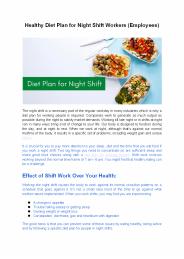STIMULATION OF EATING IN HEALTHY VOLUNTEERS FOLLOWING ACUTE - PowerPoint PPT Presentation
1 / 1
Title:
STIMULATION OF EATING IN HEALTHY VOLUNTEERS FOLLOWING ACUTE
Description:
Williams CM, Rogers PJ, Kirkham TC. Hyperphagia ... Foltin RW, Brady JV, Fischman MW. ... Savoury snacks: potato crisps (3 types) Lunch. Sandwiches (2 types) ... – PowerPoint PPT presentation
Number of Views:33
Avg rating:3.0/5.0
Title: STIMULATION OF EATING IN HEALTHY VOLUNTEERS FOLLOWING ACUTE
1
STIMULATION OF EATING IN HEALTHY VOLUNTEERS
FOLLOWING ACUTE OROMUCOSAL ADMINISTRATION OF
D9-THC.
Amanda L Townson, Sonia A Tucci, Elizabeth K
Rogers, Tim C Kirkham School of Psychology,
University of Liverpool, Liverpool L69 7ZA,
England.
Introduction
Figure 1 THC Effects on Total Energy Intake.
Analysis of subjective ratings seem to suggest
that the hyperphagic actions of THC are unrelated
to changes in mood. For example, self-ratings of
happy feelings were unaffected by any dose at
any time (Fig.5).
A well-documented effect of cannabis in people is
the stimulation of appetite and eating. This
effect is presumably mediated via actions on
endogenous cannabinoid systems, since in animal
models the hyperphagic actions of
D9-tetrahydrocannabinol (THC) are reversed by the
CB1 receptor antagonist rimonabant.1 Although
THC is used clinically to stimulate appetite,
there has been little systematic analysis of how
the drug affects the psychological, physiological
and behavioural mechanisms to promote eating. A
small number of laboratory studies in healthy
volunteers have previously reported that
significant increases in caloric intake can be
induced by inhalation of cannabis smoke and oral
THC treatments. 2-4 Those experiments also
indicated a selective increase in intake of
palatable snack foods, rather than of formal
meals effects that were particularly evident
under social eating conditions. Cannabis is also
know for its mood elevating effects, although it
is not known if this action is linked to
hyperphagia. 5,6 In the present study we examined
the acute actions on appetite of THC delivered
via oromucosal spray. Key variables assessed
were dose-response and time-course functions for
hunger ratings, food intake and mood, and the
specificity of drug effects on different food
items
Figure 5 VAS scores for happy feelings.
Which foods were overconsumed after THC?
Increased energy intake after 4.95 mg THC was
attributable to significant excess consumption of
chocolate (t351.721, p0.047), sandwiches
(t351.979, p0.028) and specifically cheese
sandwiches (t352.227, p0.016) (see Fig. 2).
Conclusions
Figure 2 Selective effects of THC on food choice.
These preliminary analyses show that appetite can
be reliably stimulated by acute, oromucosal THC
treatment. Our data revealed significant,
dose-dependent actions of THC on hunger and total
energy intake in a 6-hour test. The optimal
dose (4.95 mg) reliably increased intake of
lunchtime sandwich consumption and chocolate
snack items. This dose induced a greater than 30
increase in total caloric intake. Contrary to
earlier studies, the stimulatory effects of THC
were not dependent on social facilitation
processes (as our volunteers were tested
independently). Importantly, THC effects were not
confined to consumption of sweet, snack foods as
has been previously reported. This may suggest
the feasibility of specifically enhancing
consumption of structured, nutritionally-balanced
meals. These findings strengthen the case for
cannabinoid-based treatments in conditions
involving loss of appetite and body weight, and
further support the role of endocannabinoids in
the normal regulation of eating motivation.
Method
- Participants
- 39 University Students (f 31, m 8). The
average age was 21 (SD?4.68). All participants
were within the normal healthy BMI range for
their age. - Screened for health
- Health questionnaire and blood chemistry.
- Abstained from
- alcohol from midnight, cannabis for one week,
all recreational drugs for two weeks, and extreme
exercise the evening before the study. - Design
- Acute (09.00 16.00), randomised, double blind
study. - 4 conditions placebo, 2.55mg, 4.95mg 7.5mg
THC. - THC self-administered via oromucosal spray (GW
- Pharmaceuticals, Salisbury).
- Participants tested individually.
- Food intake observed to determine snack and meal
- consumption over test day (number of items,
food type, - weight, calorific value).
Time course of THC-hyperphagia.
Fig. 3 illustrates that self-ratings of hunger
were elevated by all doses of THC, with
significant effects apparent from 2 h after
administration. The normal pre-lunch rise in
hunger seen in controls was effectively advanced
by the drug. The maximal effect on hunger was
observed after 4.95mg THC, with a significant
increase over placebo evident at 2 h (t352.227,
p0.016 Fig. 4). Some increase in hunger was
also apparent in the post-lunch period,
particularly with the highest 7.5 mg dose.
Figure 3 THC Time Course Hunger.
- References
- Williams CM, Rogers PJ, Kirkham TC. Hyperphagia
in pre-fed rats following oral D9-THC. Physiol
Behav. 65343-6, 1998. - Foltin RW, Brady JV, Fischman MW. Behavioral
analysis of marijuana effects on food intake in
humans. Pharmacol Biochem Behav. 25577-82, 1986. - Foltin RW, Fischman MW, Byrne MF. Effects of
smoked marijuana on food intake and body weight
of humans living in a residential laboratory.
Appetite 111-14, 1988. - Haney M, Ward AS, Comer SD, Foltin RW, Fischman
MW. Abstinence symptoms following oral THC
administration to humans. Psychopharmacology
141385-94, 1999. - Struwe M, et al. Effect of Dronabinol on
Nutritional-Status in HIV-Infection. Annals of
Pharmacotherapy 27827-831, 1993. - Beal JE, et al. Dronabinol as a Treatment for
Anorexia Associated with Weight- Loss in Patients
with Aids. Journal of Pain and Symptom
Management 1089-97, 1995.
Figure 4 Hunger ratings at 2 hours.
Results
THC exerted dose-related effects on total 6-h
energy intake, from all foods (F3,383.426,
p0.028). Fig. 1 illustrates that this effect
was most marked after the 4.95 mg dose
(t352.465, p0.019). Total energy intake was
also increased by 7.5mg, although not
significantly (t351.447, ns), while 2.55mg was
largely without effect (t350.282, ns). The
4.95mg dose increased total energy intake by 427
calories.
Acknowledgements Dr John Wright - Clinical
Research Unit, School of Food Biosciences,
University of Reading. Jan Luff, Steve Hicks,
Rafe Bundy - Hugh Sinclair Nutrition Unit,
University of Reading. Dr Paul Robinson -
Biochemistry, Royal Berkshire Hospital. Heather
House - GW Pharmaceuticals, Salisbury.
Masterfoods Slough.































